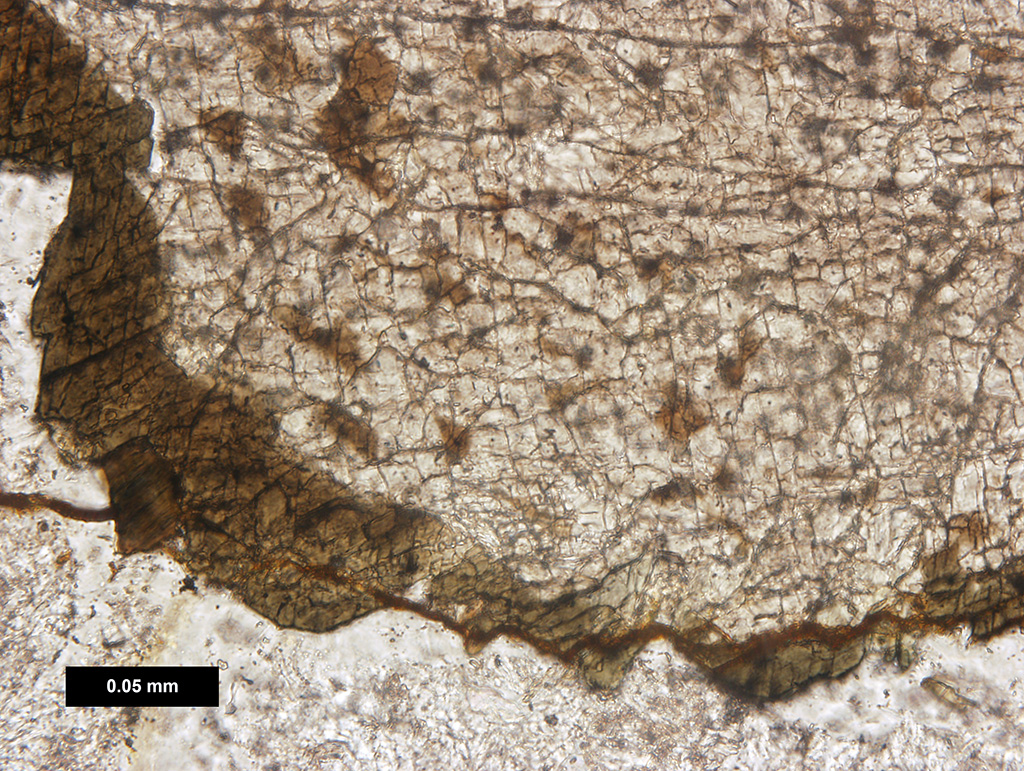For the Lct-Silica system, when the composition of a cooling magma reaches a peritectic point the leucite crystals that have been growing react with the magma to form sanidine crystals. Reaction products are likely to be found where the reactants are in contact. In this case, the product mineral sanidine typically grows around the reactant mineral leucite, creating a sanidine shell. Figure 05 shows an example of a peritectic texture. The term peritectic combines the prefix "peri-" (Greek for "around") with eutectic.

Figure 4.05. Peritectic reaction rim. . Brown hornblende forming a rim around nearly colorless augite in a gabbro. Click on the photo to see a larger version with more information.
Equilibrium phase diagrams allow geologists to use the results of laboratory experiments under known conditions to help interpret mineral assemblages and textures textures observed in rocks. If we know what should happen if equilibrium is attained, we are better able to recognize disequilibrium and to identify processes that may have produced the rocks we study. Equilibrium diagrams discussed in this chapter have been limited to binary (two-component) chemical systems and to minerals without solid solution. You can learn about melting of solid solution minerals in the Binary Solid Solutions chapter. You can learn about ternary (three-component) systems in the Ternary Eutectic Diagrams chapter.